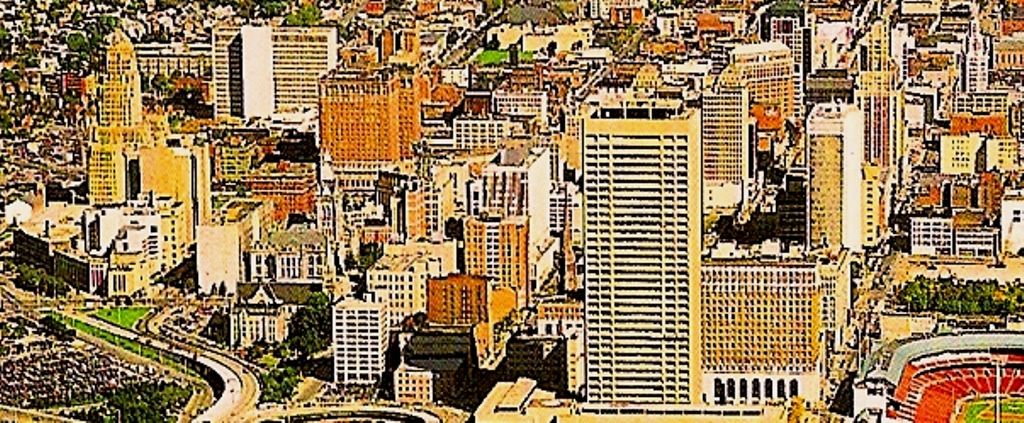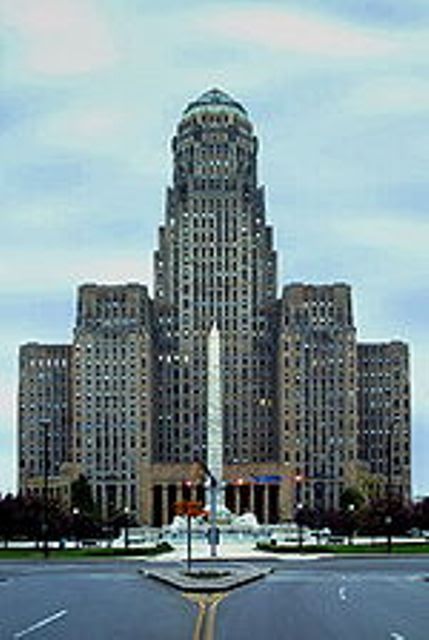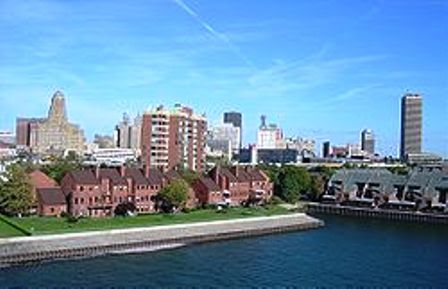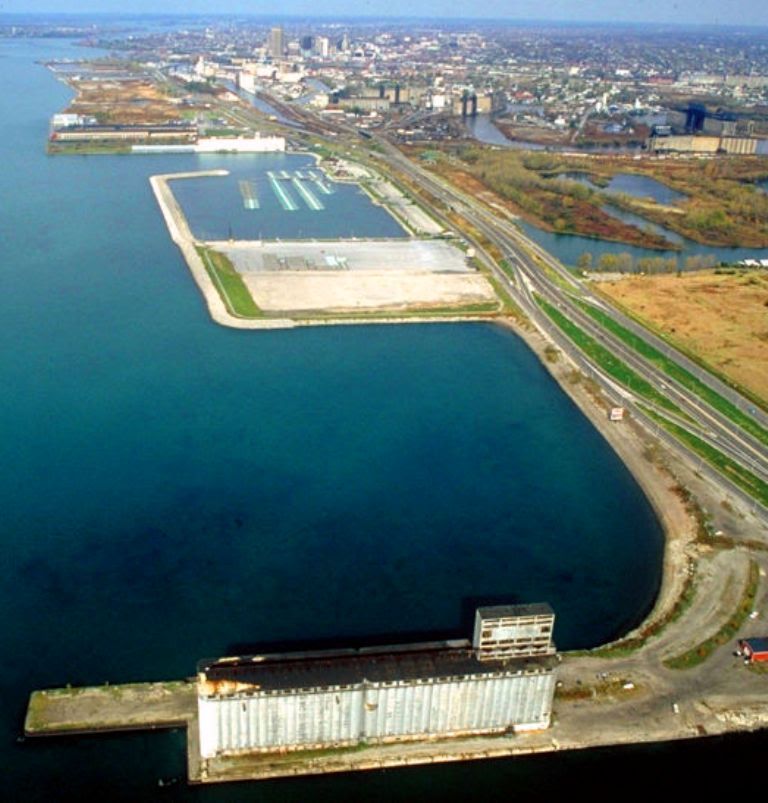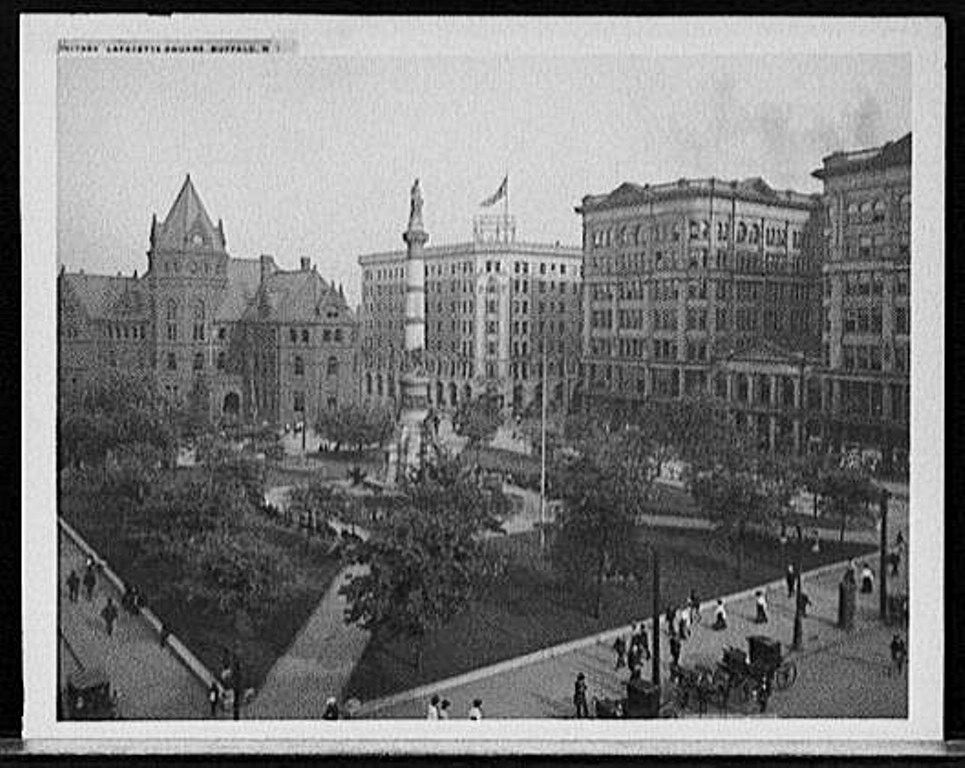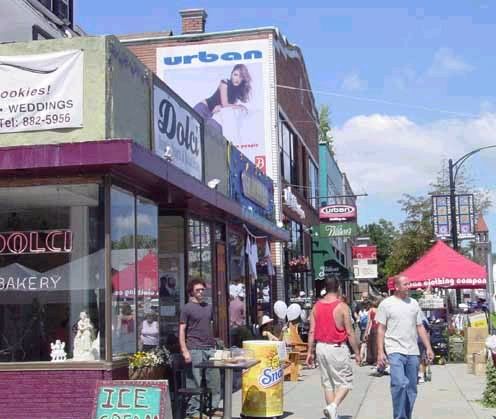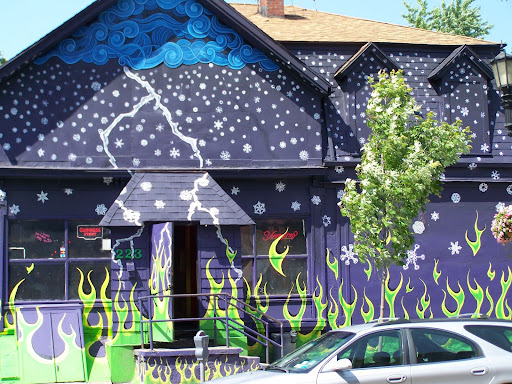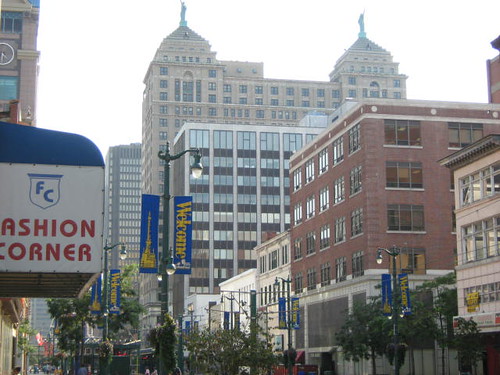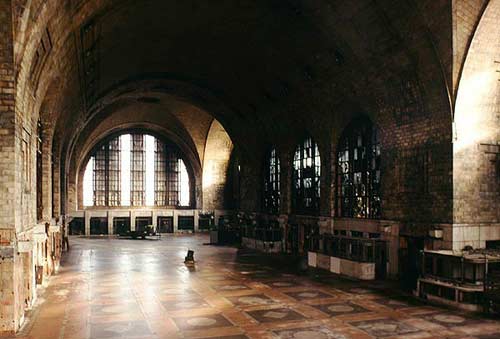JimboJones
Active Member
- Joined
- Apr 4, 2007
- Messages
- 935
- Reaction score
- 1
SAVING BUFFALO'S UNTOLD BEAUTY
By NICOLAI OUROUSSOFF
THE NEW YORK TIMES, NOVEMBER 16, 2008
By NICOLAI OUROUSSOFF
THE NEW YORK TIMES, NOVEMBER 16, 2008
ONE of the most cynical clich?s in architecture is that poverty is good for preservation. The poor don?t bulldoze historic neighborhoods to make way for fancy new high-rises.
That assumption came to mind when I stepped off a plane here recently. Buffalo is home to some of the greatest American architecture of the late 19th and early 20th centuries, with major architects like Henry Hobson Richardson, Frederick Law Olmsted, Louis Sullivan and Frank Lloyd Wright building marvels here. Together they shaped one of the grandest early visions of the democratic American city.
Yet Buffalo is more commonly identified with the crumbling infrastructure, abandoned homes and dwindling jobs that have defined the Rust Belt for the past 50 years. And for decades its architecture has seemed strangely frozen in time.
Now the city is reaching a crossroads. Just as local preservationists are completing restorations on some of the city?s most important landmarks, the federal government is considering a plan that could wipe out part of a historic neighborhood. Meanwhile Mayor Byron W. Brown is being pressed to revise a proposal that would have demolished hundreds of abandoned homes.
The outcome of these plans will go far in determining the city?s prospects for economic recovery, but it could also offer a rare opportunity to re-examine the relationship between preserving the past and building a future.
Buffalo was founded on a rich tradition of architectural experimentation. The architects who worked here were among the first to break with European traditions to create an aesthetic of their own, rooted in American ideals about individualism, commerce and social mobility. And today its grass-roots preservation movement is driven not by Disney-inspired developers but by a vibrant coalition of part-time preservationists, amateur historians and third-generation residents who have made reclaiming the city?s history a deeply personal mission.
At a time when oil prices and oil dependence are forcing us to rethink the wisdom of suburban and exurban living, Buffalo could eventually offer a blueprint for repairing America?s other shrinking postindustrial cities.
Touring Buffalo?s monuments is about as close as you can get to experiencing firsthand the earliest struggles to define what an American architecture would look like.
The city?s rise began in 1825 with the opening of the Erie Canal, which opened trade with the heartland. By the end of the 19th century the city?s grain silos and steel mills had become architectural pilgrimage sites for European Modernists like Erich Mendelsohn and Bruno Taut, who saw them as the great cathedrals of Modernity. In their vast scale and technological efficiency, they reflected a triumphant America and sent a warning signal to Europe that it was fast becoming less relevant.
Yet it is the parade of celebrated architects who worked here as much as the city?s industrial achievements that makes Buffalo a living history lesson. Daniel Burnham?s 1896 Ellicott Square Building, with its mighty Italian Renaissance facade, towers over the corner of Main and Church Streets. Just a block away is Louis Sullivan?s 1895 Guarantee Building, a classic of early skyscraper design decorated in intricate floral terra-cotta tiles.
Across town, Henry Hobson Richardson built his largest commission: the 1870 Buffalo State Asylum for the Insane, composed of a pair of soaring Romanesque towers flanked by low brick pavilions. Light and air poured in through tall windows; spacious 18-foot-wide corridors were designed to promote interaction among the inmates, an idea that would be refined by Modernists in their communal housing projects decades later.
But it was Wright who made the decisive leap from an architecture that drew mainly on European stylistic precedents to one that was rooted in a growing cultural self-confidence. Wright built two of those great pillars of American architecture here, the 1904 Larkin Building and the 1905 Darwin D. Martin House.
Although torn down in 1950, the Larkin Building, designed as the headquarters of the Larkin Soap Company, remains one of the most influential designs of the 20th century. Wright invented floor-to-ceiling glass doors, double-pane windows and toilets affixed to the walls for this monument to American business. Massive, forbidding brick piers anchoring the exterior signaled a break with classical historical styles. The light-filled atrium piercing its five floors, with managers visible at their desks at the bottom, turned the traditional office hierarchy on its head.
The Martin House, a Prairie House complex of five buildings on a vast suburban lot, is the domestic counterpart to this vision. No European architect had come close to imagining such a fluid world. A composition of low brick structures, terraces, pergolas and gardens in which man and landscape were in tune, the design celebrated a democratic ideal of family life in which traditional social barriers, and the walls that reinforce them, were finally torn down.
Yet Wright?s genius lay in his ability to accomplish this feat while conveying a profound serenity. The low roof and broad cantilevered eaves both beckoned to the horizon and provided shelter. The grid of wood beams in the living room, set just below ceiling level, visually broke down the space into discrete rooms while maintaining a sense of openness. Above all this architecture represented freedom both from Europe?s suffocating traditions and from the feelings of cultural inferiority that had defined American architecture since the earliest days of the republic.
This departure from recycled European precedents is reflected in the city?s late-19th-century urban planning as well. Buffalo?s original plan from the early 19th century was loosely based on Pierre Charles L?Enfant?s 1791 plan for Washington, an Americanized version of Paris?s system of radiating boulevards. Its civic core, dominated by a mountainous City Hall, reads as an isolated fragment of a City Beautiful plan that was never fully realized.
Olmsted, as much social reformer as landscape architect, had visited John Paxson?s Birkenhead Park near Liverpool, a pioneering project designed to better the lives of the city?s working class. When he returned to New York, he expanded on that vision in his designs for Central and Prospect Parks, which he conceived as realms of psychological healing that could also break down class boundaries.
In Buffalo he realized an even grander ambition, creating a vast network of parks and parkways that he hoped would have ?a civilizing effect? on the ?dangerous classes? populating the American city. Flanked by rows of elm trees, the parkways were broken up by a series of gorgeous landscaped roundabouts, slowing the city?s rhythms of movement into something more majestic yet distinctly democratic.
It didn?t last of course. By the 1950s Buffalo?s economy had already embarked on its long path to disintegration. The completion in 1959 of the St. Lawrence Seaway, which created a more direct route to the Atlantic Ocean, made the Erie Canal obsolete and deprived the city of its commercial lifeline. Economic decline was exacerbated by race riots in 1967 and white flight to the suburbs. By the mid-1970s the inner city was being abandoned.
Even so, many of the city?s most revered monuments survived. Despite the destruction of some surrounding structures, the main house at the Martin complex remained intact. Richardson?s asylum closed in the mid-1970s, and though one of its wings was demolished to make room for a new hospital next door, the bulk of the building still towers over Olmsted?s park.
Today Buffalo is a collection of fragile museum pieces with a covey of local stewards struggling to preserve them as a means to help save the city.
It would not be the first place to see its history as a means of attracting tourist dollars. (Boston and New Orleans are among the obvious precedents.) What makes this historic revival so heartwarming, however, is that it is driven by genuine civic pride in the face of daunting odds.
When a group of private citizens took control of the Martin House in 1992, for example, their ambitions were relatively modest: to restore the main house, one of three structures that had not yet been demolished. As time wore on, the group began to see the entire complex as a singular vision that could not be understood unless it was fully brought back to life .
In the early 1960s its conservatory and pergola had been ripped out to make way for an unsightly apartment complex; in 1994 the group raised the money to purchase the structure, tear it down and rebuild the elements of Wright?s complex that had been destroyed. A few years ago they bought the small gardener?s cottage that anchored the northwest corner of the site as well.
The project?s overall cost soared to more than $50 million from $10 million. But most of the structural and exterior work is now complete, and now, for the first time in decades, you can fully glean the genius of Wright?s work.
Other projects have been less high profile but equally exemplary. On the October day I arrived, I met with Monica Pellegrino Faix, a representative of the Richardson Center Corporation, a local nonprofit group trying to save the asylum. The state has committed $76 million to help restore the complex, and the group is now trying to come up with potential uses for its vacant buildings, including using one for an architecture museum.
Later that day I met with a group of local activists who have been rebuilding single-family houses in some of the city?s most run-down historic neighborhoods. On Richmond Avenue, one of Olmsted?s grand decaying parkways, Harvey Garrett, a strategic planning consultant, spent several years renovating a 19th-century Victorian house before an arsonist set fire to it in 2006. He rebuilt it, and he is now one of the city?s busiest community organizers and strongest preservation voices. Dozens of houses are now being renovated along the avenue, and an entire neighborhood that was once considered crime ridden is now livable again.
In a mostly abandoned factory area not far from downtown, Douglas Swift, a developer whose family has lived in Buffalo for generations, recently completed the restoration of a former Larkin warehouse, an early example of concrete frame construction; the project, which is now an office complex, has spurred a range of new development in the area.
What we see is a more egalitarian, diverse and socially tolerant vision of the city. It is both pro-density and pro-history. These residents have come to recognize through firsthand experience that social, economic and preservation issues are all deeply intertwined.
Sadly, not everyone has been so enlightened on this issue. Preservationists raised an outcry this year when Mayor Brown unveiled his plan to demolish 5,000 houses over the next five years as part of an effort to clean up some of the city?s poorest neighborhoods. The National Trust for Historic Preservation and the mayor?s office are now trying to hammer out a compromise.
And as the preservation movement has grown, it has inevitably gotten involved in bigger, more complex urban issues. The federal Homeland Security Department has proposed an expansion of the entrance to the Peace Bridge, the city?s main border crossing into Canada. Preservationists balked. The project, which includes a vast new parking plaza for commercial trucks, would require razing five blocks of Columbus Park, a neighborhood of historic houses mostly built from 1860 through the late 1920s. A 20-foot-high berm would also be built alongside Olmsted?s Front Park, which flanks one side of the neighborhood, blocking out sublime views of Lake Erie and the Niagara River.
The National Trust, which opposes the plan, has suggested moving the new parking plaza to the Canadian side of the border ? a possibility that the Canadian government says it will consider ? or rerouting traffic to one of four other bridges. But those prospects appear doubtful.
Meanwhile the city has begun to take a few cautious steps into the present. Toshiko Mori, a New York architect and the former chairwoman of the architecture department at Harvard?s Graduate School of Design, is putting the finishing touches on a gorgeous new visitors? center at the Martin House. Gwathmey Siegel & Associates of New York has designed a sleek new zinc- and cast-stone-clad home for the Burchfield-Penney Art Center near the historic district of Elmwood Village, which opens next Saturday.
But how these projects will be forged into a cohesive vision for the city?s future is less certain. The best-intentioned preservationists, however determined, can accomplish only so much. Often developers co-opt the achievements of these trailblazing individuals and nonprofit groups by dolling up historic neighborhoods for private gain. The city?s rough edges are smoothed over to satisfy the hunger for more tourist dollars. Shiny new convention centers and generic boutiques follow. Yet schools, roads, bridges and electrical and power lines continue to crumble.
Buffalo is an ideal testing ground for rethinking that depressing model. Its architectural heritage embodies an America that thought boldly about the future, but believed deeply in the city as a democratic forum. What?s needed now is to revive that experimental tradition.


